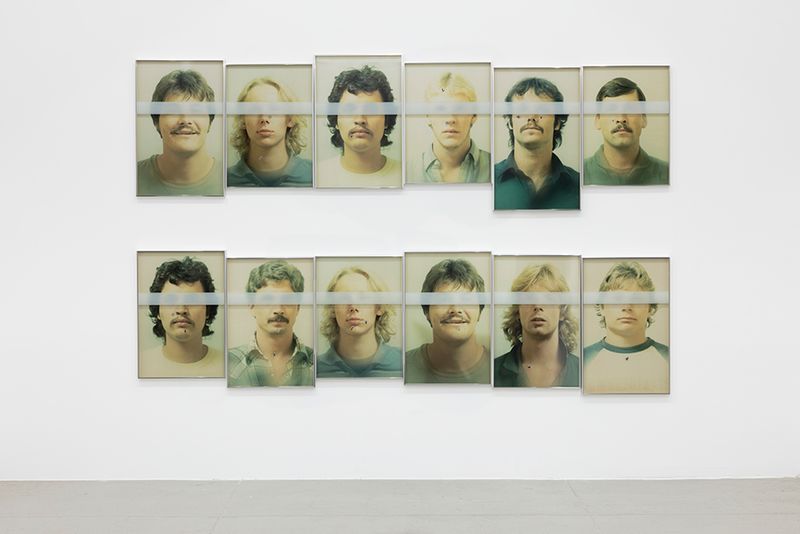
Serialities
15 February - 8 April 2017
New York, 22nd Street
Organized with Olivier Renaud-Clément Beginning 15 February, Hauser & Wirth will present ‘Serialities,’ a group exhibition organized with Olivier Renaud-Clément which examines notions of seriality and repetition, and ways in which artists explore linear and non-linear narratives through iterations. On view through 8 April, the exhibition includes photographs, drawings, and sculptures by Yuji Agematsu, Carl Andre, Bernd and Hilla Becher, Sophie Calle, Liz Deschenes, Isa Genzken, Eva Hesse, Roni Horn, On Kawara, Robert Kinmont, Louise Lawler, Zoe Leonard, Sherrie Levine, Sol LeWitt, Paul McCarthy, Roman Opalka, Andrea Robbins and Max Becher, August Sander, Karin Sander, Mira Schendel, Cindy Sherman, David Smith, Ian Wallace, and Mark Wallinger.
The central informing figure – the soul – of ‘Serialities’ is German portrait and documentary photographer August Sander (1874 – 1964), best known for his monumental project People of the 20th Century. Sanders’ remarkable encyclopedic archive comprises more than 600 photographs shot between 1910 and the early 1950s, and creates a provocative collective portrait of the artist’s fellow citizens, grouped according to determined sociological categories. A selection of photographs from his portfolio People Who Came to My Door, a subset of People of the 20th Century, will be on view in ‘Serialities,’ reflecting Sanders’ place in art history as a touchstone for subsequent generations of photographers and artists. In particular, his practice presaged and influenced the photo-based conceptualism that emerged in the early 1960s with such artists as Bernd and Hilla Becher.
The Bechers’ shadowless photographs of industrial buildings and structures, framed with a distinctive frontality and presented in grids, echo Sanders’ fascination with visual cataloging, taxonomies, and the implicit politics of connecting past and present. During the 1970s, American conceptual artist Sherrie Levine developed a series of photographic works based upon other artists’ well-known photographs. Her appropriated repetitions vary crucially from their source materials through almost imperceptible differences, tiny nuances that nevertheless render the works her own and introduce a host of questions about contemporary context.
In ‘Serialities,’ Levine’s ‘After August Sander’ (2012) includes photographs of 18 works selected from Sander’s original opus. Also on view is Levine’s ‘African Masks After Walker Evans 1 – 24’ (2014). Roni Horn’s ‘Portrait of an Image (with Isabelle Huppert)’ (2005) exemplifies the ways in which this noted American artist employs seriality and repetition to create her own encyclopedia of identity. Here, 50 photographic portraits depict French actress Isabelle Huppert performing a variety of emotions. Horn’s piece is a poetic study of the rich gulfs of difference between even the smallest variations. Horn’s sculpture series Keys and Cues and When Dickinson Shut Her Eyes comprise aluminum and cast black plastic bars with lines of texts of poetry by Emily Dickinson. Each bar is of the same thickness but of a different length, with the lines of text running in varying directions and sometimes mirror-inverted. In the Key and Cues series, each bar features the first line of a Dickinson poem; in the works ‘When Dickinson Shut Her Eyes: No 859’ (1993 / 2007) and ‘When Dickinson Shut Her Eyes: No. 1259’ (1993 / 2004), several bars lean as a group against the wall to make up an entire poem. The result is a collection of objects that prompts the experience of both looking and reading.
Notably, Dickinson did not title her poems; they were numbered posthumously and indexed by first lines. Horn’s series features the numbers of the poems in the works’ titles. Sol LeWitt’s sculptures are executed in a comparably mechanical way. ‘Serial Project ABCD 5’ (1968) and ‘Serial Project #1 B789’ (1968 – 1969) are constructed of industrial steel according to a system of organized guidelines conceived by the artist. ‘This kind of art,’ LeWitt wrote, ‘is not theoretical or illustrative of theories; it is intuitive, it is involved with all types of mental processes and it is purposeless.’ LeWitt is not concerned with the concept of art, but with the conceptual basis for its making. The rigor of repetition and pattern in the works of Sander, LeWitt, and the Bechers is likewise found in Zoe Leonard’s large-scale wall installation ‘Natural Bridge’ (2016). In this composition of 731 postcards of a rock formation in Rockbridge County VA, Leonard uses the strategies of iteration and variation that are among the signatures of her critically acclaimed oeuvre. Her postcards, presented en masse, draw attention to the ways in which artifacts and cultural conventions have mapped and framed the topography of the natural world – and our understanding of it. French-born Polish artist Roman Opalka pushed the concept of seriality to its outer extreme with his ‘OPALKA 1965/1 – ∞’ Détail series.
In 1965, Opalka began measuring time by means of an artistic practice based on counting time. In his initial canvas, Opalka began with the number one, painting on the upper left-hand corner, and continued painting numbers sequentially in rows until he ran out of space, at which point he would continue the sequence on another canvas. Initially using white paint on a black background, Opalka evolved to a dark gray background, and in 1972, he began adding a 1% mixture of white to the black for each new canvas, reducing the tonal value of the ground until he stopped adding the white in 2008. This process continued serially, in a movement toward infinity, accrusing into a life-long body of work spanning five decades until the artist’s death in 2011. ‘OPALKA 1965/1 - ∞’ is a breathtaking example of an artist’s relentless exploration of the mutability of time and its inextricable link with mortality. ‘Serialities’ includes ‘OPALKA 1965/1 – ∞, Détail 2806353 – 2828874’, along with three photographic self portraits that were part of the artist’s project starting from 1968.
After working on the numeric Détails for a few years, Opalka determined that the project was still incomplete, and decided to incorporate black and white photographs of himself, as marker of time’s passage, that he took at the end of each workday. Together with the paintings, these photographs form a poetic visual diary highlighting the artist’s journey through life. While the numbers continue to increase on the canvas, Opalka’s photographs capture his decrease – the ageing of his body. Opalka also complemented his painting process with recordings in which he counted, in Polish, the numbers he was inscribing. An excerpt of these audio recordings is part of ‘Serialities.’ In other works on view, seriality is a central element of the artists’ working process -- but without any defined end point. Stagecoach is one of Paul McCarthy’s major ongoing projects within a sprawling multidisciplinary practice in which repetition and variation – of imagery, of spoken words, of scenarios – abets narratives that pitch America’s favored mythologies against very real human drives and desires.
Spanning a period of nearly five decades, On Kawara’s signature Today series (also known as the Date Paintings) began in the 1960s. Each meticulous painting offers viewers a calendar date that may have been personally or historically significant to artist. A strict formula governed the size of these canvases, the color of the paint, the language relating to the date of composition, and the time allowed to complete the painting. The creative steps never varied, with On Kawara’s routine of seriality transforming production into an open-ended meditation for the artist. For Brazilian artist Mira Schendel, seriality formed the basis of a celebrated decades-long practice. On view in the exhibition are untitled works from two of her 1970s series Linear Drawings / Desenhos Linearest and Objetinho gráfico / Little Graphic Object. Each builds upon a series of symbols, lines, letters, and shapes to convey an intense aura and corporeal presence. Meanwhile, Mark Wallinger’s recent id Paintings express the bodily in a more directly personal form as a self-portrait series referencing the artist’s own body.
Each work in the series is an element in Wallinger’s ongoing investigation into the relationship between the self and a society in which behavior and personal identity are coming under increasingly close scrutiny. The id Paintings are Wallinger’s record of intuitive actions that express the primal, impulsive, and libidinal characteristics of the id. Visitors to ‘Serialities’ are invited to a special designated Book Lab in the form of a Reading Room on the gallery’s 3rd floor. Here, a curated selection of catalogs offers additional insights into the practice of each of the artists represented in the exhibition. Additional texts address the overarching theme of seriality that anchors the exhibition. Vitrines in the gallery bookshop feature archival materials related to the work of August Sander, including his historic seven-volume portrait of Weimar Germany, ‘People of the Twentieth Century’. The Reading Room is part of Hauser & Wirth’s ongoing Book & Printed Matter Lab program, which highlights the important place that books and printed matter occupy in the practice of artists.
Installation views


About the Artists

Roni Horn
Roni Horn’s work consistently generates uncertainty to thwart closure in her work. Important across her oeuvre is her longstanding interest to the protean nature of identity, meaning, and perception, as well as the notion of doubling; issues which continue to propel Horn’s practice.
Since the mid-1990s, Horn has been producing cast-glass sculptures. For these works, colored molten glass assumes the shape and qualities of a mold as it gradually anneals over several months. The sides and bottom of the resulting sculpture are left with the rough translucent impression of the mold in which it was cast. By stark contrast, the top surface is fire-polished and slightly bows like liquid under tension. The seductively glossy surface invites the viewer to gaze into the optically pristine interior of the sculpture, as if looking down on a body of water through an aqueous oculus. Exposed to the reflections from the sun or to the shadows of an overcast day, Horn’s glass sculpture relies upon natural elements like the weather to manifest her binary experimentations in color, weight and lightness, solidity and fluidity. The endless subtle shifts in the work’s appearance place it in an eternal state of mutability, as it refuses a fixed visual identity. Begetting solidity and singularity, the changing appearance of her sculptures is where one discovers meaning and connects her work to the concept of identity.
For Horn, drawing is a primary activity that underpins her wider practice. Her intricate works on paper examine recurring themes of interpretation, mirroring and textual play, which coalesce to explore the materiality of color and the sculptural potential of drawing. Horn’s preoccupation with language also permeates these works; her scattered words read as a stream of consciousness spiralling across the paper. In her ‘Hack Wit’ series, Horn reconfigures idiomatic turns of phrase and proverbs to engender nonsensical, jumbled expressions. The themes of pairing and mirroring emerge as she intertwines not only the phrases themselves but also the paper they are inscribed on, so that her process reflects the content of the drawings. Words are her images and she paints them expressionistically, which—combined with her method—causes letters to appear indeterminate, as if they are being viewed underwater.
Notions of identity and mutability are also explored within Horn’s photography, which tends to consist of multiple pieces and installed as a surround which unfolds within the gallery space. Examples include her series ‘The Selected Gifts, (1974 - 2015),’ photographed with a deceptively affectless approach that belies sentimental value. Here, Horn’s collected treasures float against pristine white backdrops in the artist’s signature serial style, telling a story of the self as mediated through both objects and others—what the artist calls ‘a vicarious self-portrait.’ This series, alongside her other photographic projects, build upon her explorations into the effects of multiplicity on perception and memory, and the implications of repetition and doubling, which remain central to her work.
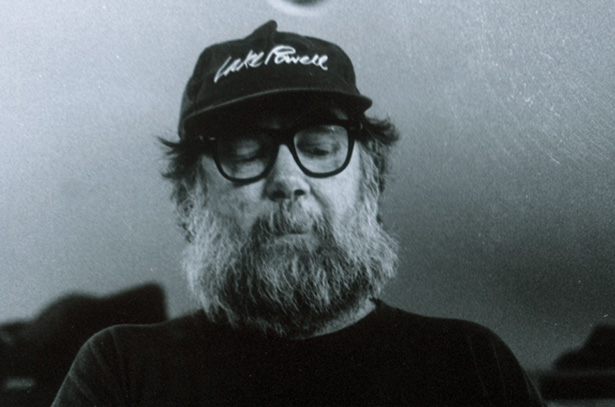
PAUL McCARTHY
Paul McCarthy is widely considered to be one of the most influential and groundbreaking contemporary American artists. Born in 1945, and raised in Salt Lake City, Utah, he first established a multi-faceted artistic practice, which sought to break the limitations of painting by using unorthodox materials such as bodily fluids and food. He has since become known for visceral, often hauntingly humorous work in a variety of mediums—from performance, photography, film and video, to sculpture, drawing and painting.
During the 1990s, he extended his practice into installations and stand-alone sculptural figures, utilizing a range of materials such as fiberglass, silicone, animatronics and inflatable vinyl. Playing on popular illusions and cultural myths, fantasy and reality collide in a delirious yet poignant exploration of the subconscious, in works that simultaneously challenge the viewer’s phenomenological expectations.
Whether absent or present, the human figure has been a constant in his work, either through the artist‘s own performances or the array of characters he creates to mix high and low culture, and provoke an analysis of our fundamental beliefs. These playfully oversized characters and objects critique the worlds from which they are drawn: Hollywood, politics, philosophy, science, art, literature, and television. McCarthy’s work, thus, locates the traumas lurking behind the stage set of the American Dream and identifies their counterparts in the art historical canon.
McCarthy earned a BFA in painting from the San Francisco Art Institute in 1969, and an MFA in multimedia, film and art from USC in 1973. For 18 years, he taught performance, video, installation, and art history in the New Genres Department at UCLA, where he influenced future generations of west coast artists and he has exhibited extensively worldwide. McCarthy’s work comprises collaborations with artist-friends such as Mike Kelley and Jason Rhoades, as well as his son Damon McCarthy.
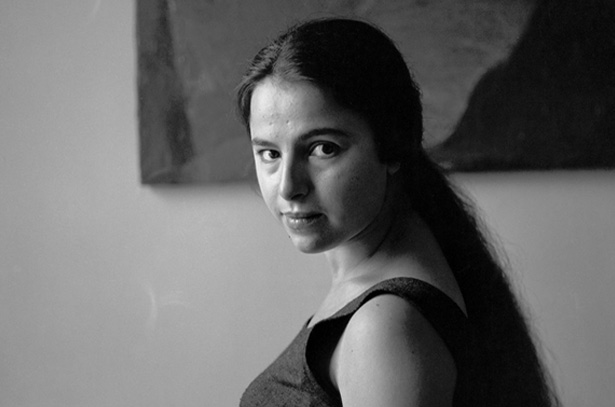
Eva Hesse
Born in Hamburg Germany in 1936, Eva Hesse is one of the icons of American art of the 1960s, her work being a major influence on subsequent generations of artists. Comprehensive solo exhibitions in the past 50 years, as well as a retrospective that toured from the San Francisco Museum of Modern Art to the Museum Wiesbaden in Germany and finally to the Tate Modern in London, have highlighted the lasting interest that her oeuvre has generated. Hesse cultivated mistakes and surprises, precariousness and enigma, to make works that could transcend literal associations. The objects she produced, at times barely present yet powerfully charismatic, came to play a central role in the transformation of contemporary art practice.
In New York in the 1960s, Hesse was one of a group of artists, including Robert Morris, Bruce Nauman, Richard Serra and Robert Smithson, who engaged with materials that were flexible, viscous or soft: latex rubber, plastic, lead, polythene, copper, felt, chicken-wire, dirt, sawdust, paper pulp and glue. Often unstable and subject to alteration, these elements yielded works that were vital in their relativity and mutability. Hesse was aware she produced objects that were ephemeral, but this problem was of less concern to her than the desire to exploit materials with a temporal dimension. Much of the life-affirming power of Hesse’s art derives from this confident embrace of moment. As she stated in an interview with Cindy Nemser for Artforum in 1970, 'Life doesn’t last; art doesn’t last.'
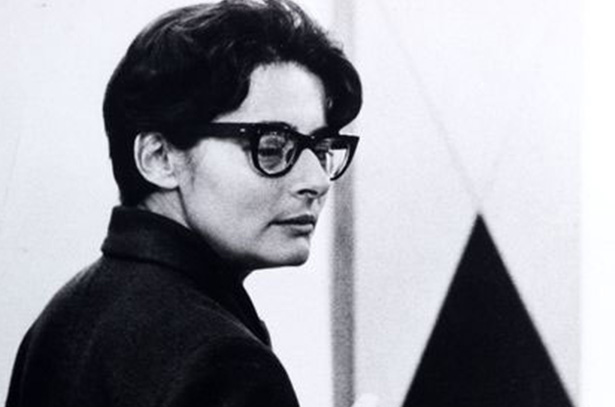
Mira Schendel
Mira Schendel is one of the most significant artists to emerge from Latin America during the twentieth century. Born in Switzerland in 1919, Schendel emigrated to Brazil from Europe in 1949, ultimately settling in São Paulo in 1953, where she swiftly occupied a leading place in the country's vibrant post-war artistic scene.
Traversing the realms of painting, drawing and sculpture, while deriving inspiration from a constellation of sources—as varied as Concrete Poetry, semiotics, phenomenology, the epic tradition, Zen Buddhism, and aspects of Eastern and Western philosophy—Schendel's prolific body of works provoked a radically new lexicon of avant-gardist practice in Brazil.
The late Brazilian poet, Haroldo de Campos, has described the spirit of her work as ‘an art of voids’, wherein, ‘the utmost redundance begins to produce original information; an art of words and quasi-words where the graphic form veils and unveils, seals and unseals… a semiotic art of icons, indexes, symbols which print on the blank of the page their luminous foam.’
Born in Zurich to a family of Jewish origin, Schendel was baptized and raised as a Catholic in Italy. In 1938, while studying philosophy at the Catholic University in Milan, Schendel was persecuted for her family's Jewish heritage. Forced to relinquish her studies and citizenship, Schendel sought asylum in Yugoslavia before passing through Switzerland and Austria (with the initial intent of establishing herself in Sophia, Bulgaria), and ultimately settling in Brazil.
This history is vital to the spiritual sensibility underlying the poetics of Schendel's work, as well as to her particular investigations of language and its material embodiments.
Although Schendel received considerable recognition during her lifetime, since her death in 1988, her work has continued to achieve national and international visibility: cementing her status as one of the most important artistic voices of her time.

Zoe Leonard
New York-based artist Zoe Leonard balances rigorous conceptualism with a distinctly personal vision in her work, which merges photography, sculpture, and installation. By employing strategies of repetition, shifting perspectives, and a multitude of printing processes, Leonard’s practice probes the politics of representation and display. Leonard explores themes such as gender and sexuality, loss and mourning, migration, displacement, and the urban landscape. Her photography specifically invites us to contemplate the role that the medium plays in constructing history, and to consider the roots of contemporary photographic culture. More than its focus on any particular subject, however, Leonard’s work encourages the viewer to reconsider the act of looking itself, drawing attention to observation as a complex, ongoing process.
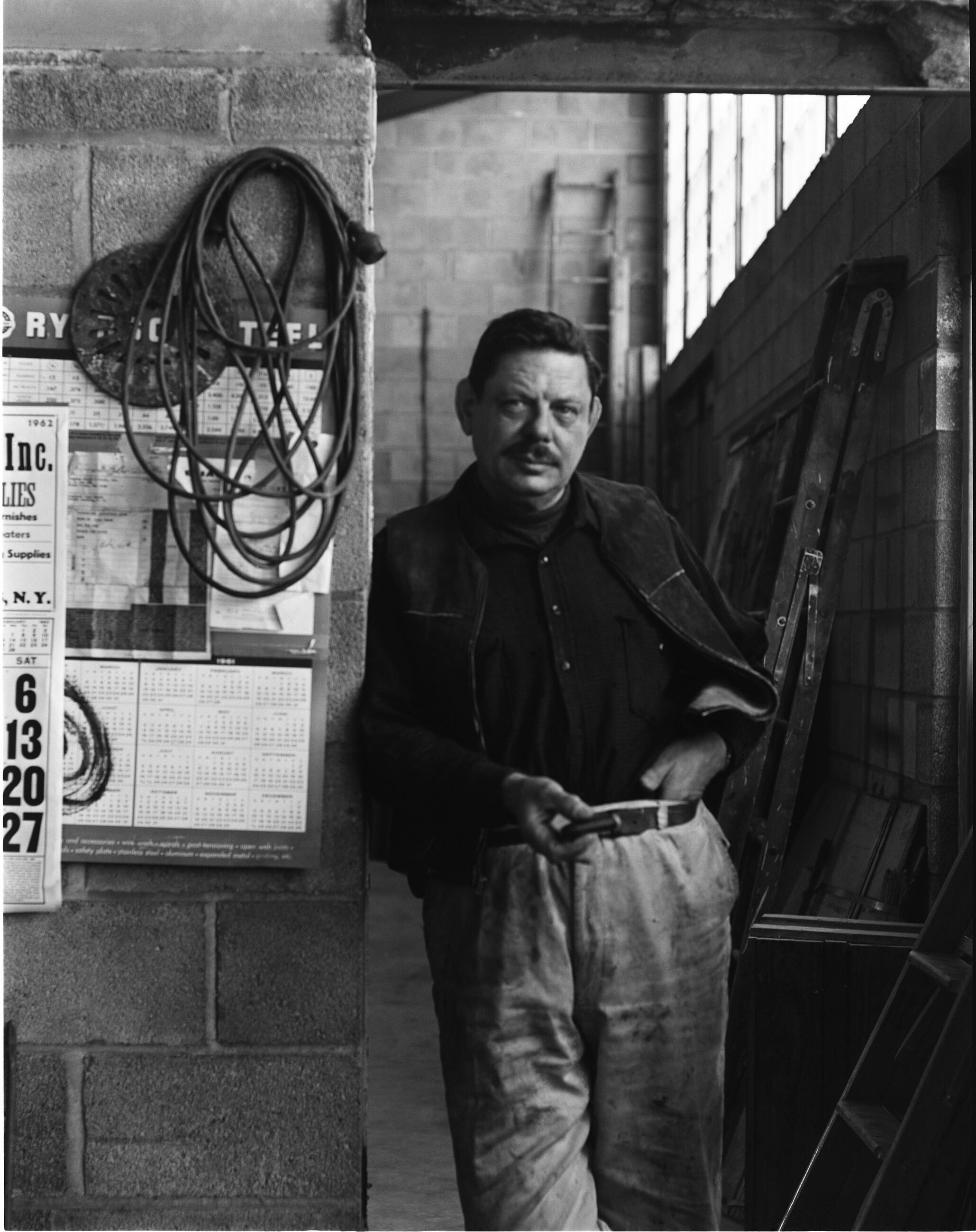
David Smith
David Smith is regarded as one of the most innovative artists and important American sculptors of the 20th century. He transformed sculpture by rejecting the traditional methods of carving and casting in favor of torch-cutting and welding, becoming the first artist known to make welded sculpture in America. These methods allowed him to work in an improvisational manner in creating open and large-scale, abstract sculptures. In his later years, he installed his sculptures in the fields of his home in the Adirondack Mountains, where a dialogue between the art object and nature emerged as central to his practice. His sculpture-filled landscape inspired Storm King Art Center and other sculpture parks throughout the world, as well as anticipating the land and environmental art movements.
Smith was born in 1906 in Decatur, Indiana. He worked briefly as a welder in an automobile factory before moving to New York City to become an artist in 1926. He studied painting at the Art Students league, where Cubism and Surrealism were foundational to his practice. He began welding sculpture around 1933 after seeing reproductions of constructed steel sculptures by Pablo Picasso and Julio González. He later became associated with the abstract expressionist movement and paved the way for minimalism with radically simplified, geometric works. Painting and drawing remained integral to what Smith called his ’work stream’. He embraced a holistic attitude toward artmaking and dismissed the idea of a separation between mediums. Acknowledging the tradition of painted sculpture throughout art history and drawing from the bold palettes of modernism and pop culture, Smith often painted his sculptures. David Smith died in 1965, leaving behind an expansive, complex, and powerful body of work that continues to exert influence upon subsequent generations of artists.
Smith began exhibiting his work as early as 1930. His first survey was organized by the Museum of Modern Art, New York in 1957. His sculpture was represented by the United States at the São Paulo Biennale in 1951 and at the Venice Biennale in 1954 and 1958. Posthumous retrospectives have been held at the Solomon R. Guggenheim Museum (1979 and 2006, which traveled to Tate Modern, London and the Centre Pompidou, Paris) and at the Los Angeles County Museum of Art (2011, which traveled to the Whitney Museum of American Art, New York and the Wexner Center for the Arts, Columbus, Ohio). Other major surveys have been organized at the Sezon Museum of Art, Tokyo (1994, traveled throughout Japan), the Museo Nacional Centro de Arte Reina Sofía, Madrid (1996), Storm King Art Center (1997–99), and Yorkshire Sculpture Park, Wakefield, UK. A three-volume, fully illustrated catalogue raisonné of Smith’s sculpture was published in 2021 by the Estate of David Smith and distributed by Yale University Press. A biography by Michael Brenson, David Smith: The Art and Life of a Transformational Sculptor, was published by Farrar, Straus, and Giroux in 2022.
Current Exhibitions
1 / 12




































